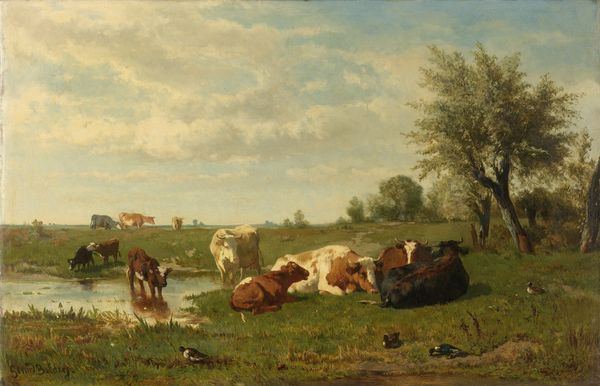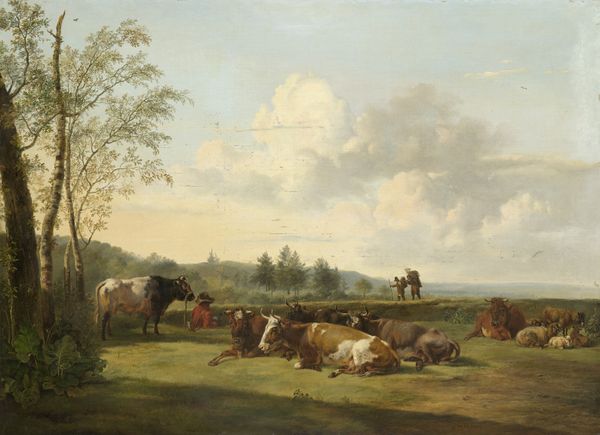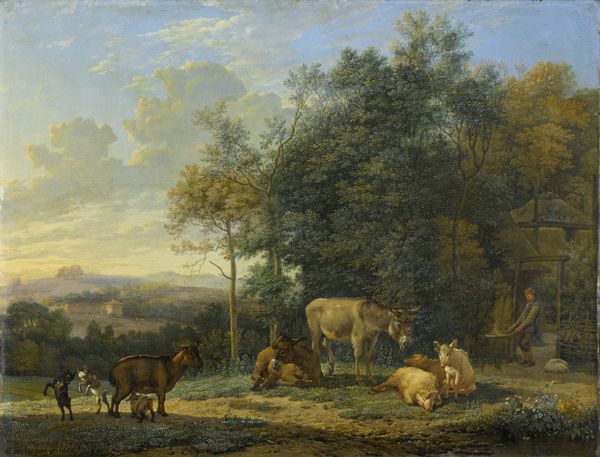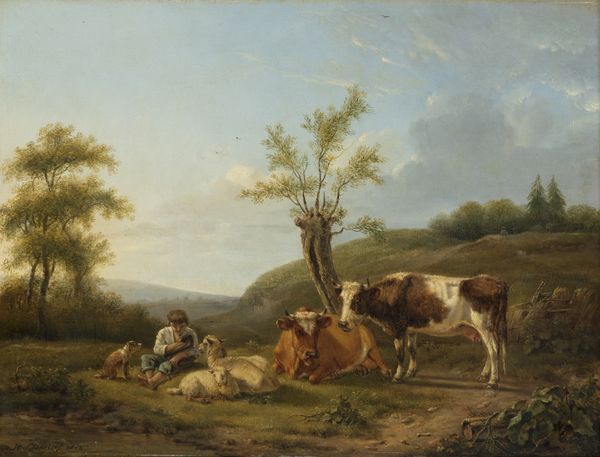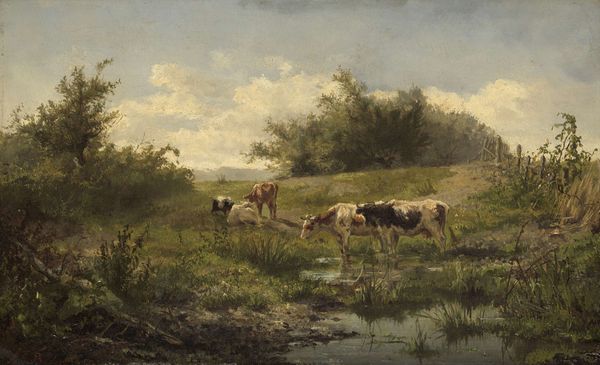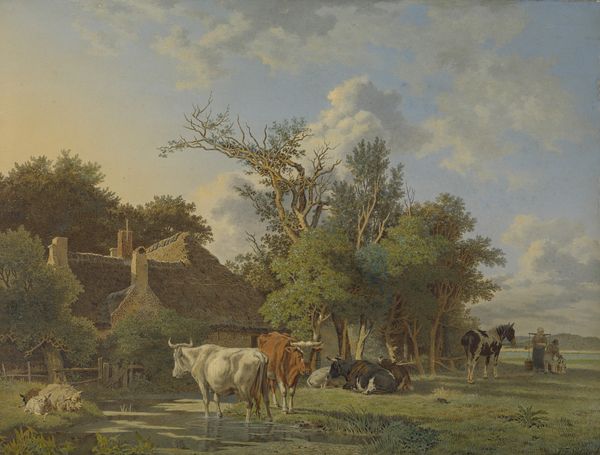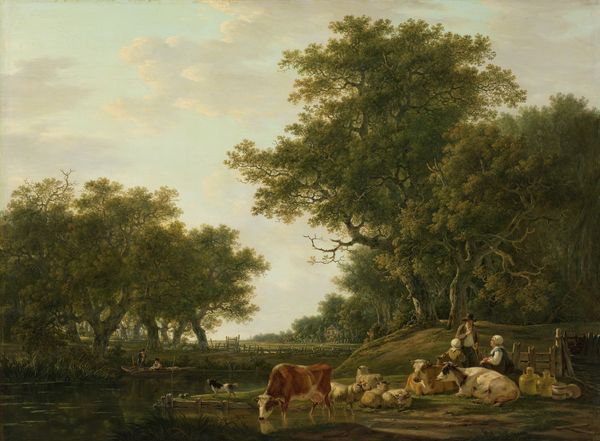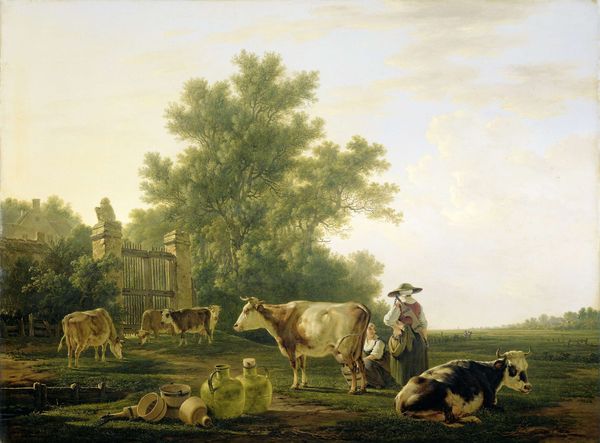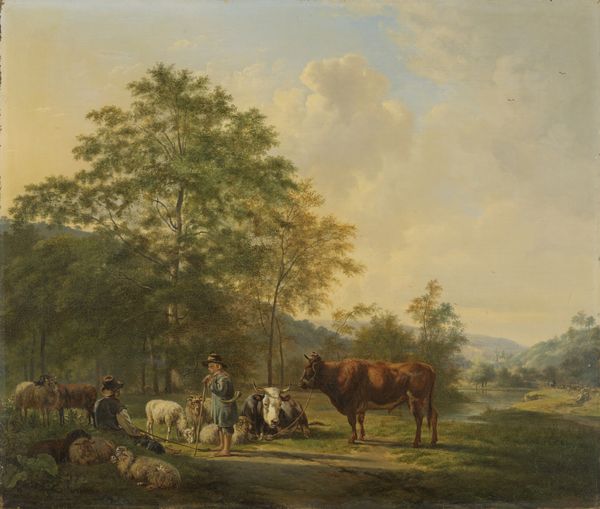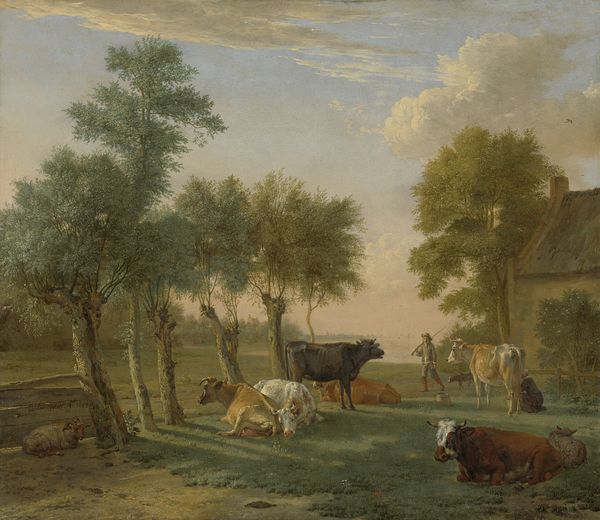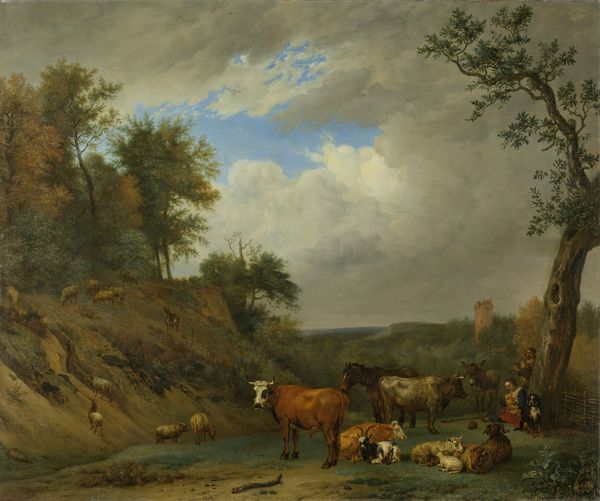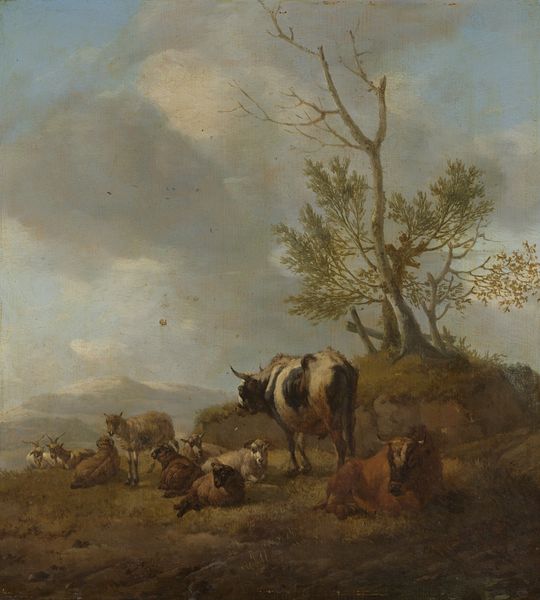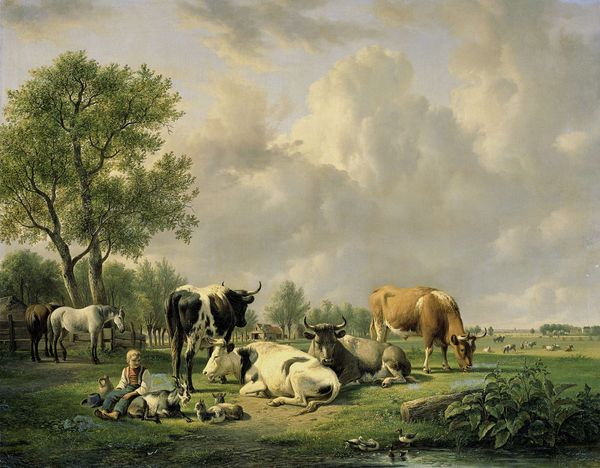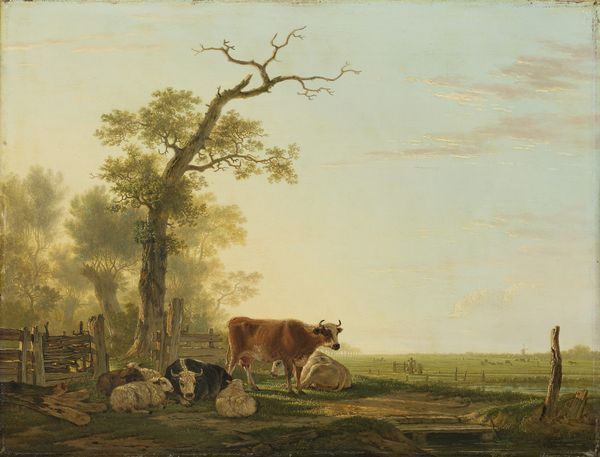
painting, oil-paint
#
painting
#
oil-paint
#
landscape
#
oil painting
#
romanticism
#
genre-painting
#
realism
Dimensions: height 48 cm, width 58 cm, depth 8.5 cm
Copyright: Rijks Museum: Open Domain
Curator: Here we have "Landscape with Cattle", a canvas rendered in oils by Jan Kobell the Younger in 1804. Art Historian: It evokes such tranquility. The muted light seems to soften every edge, blurring the lines between the land, sky, and water. Curator: Right. Kobell presents what seems a bucolic, calm rural life, part of the broader Romantic interest in nature as an escape. However, these portrayals often obscured the socio-economic realities of rural workers in the 19th century, romanticizing a labor-intensive lifestyle. Art Historian: That's a good point, but look at the cattle. They are almost totemic, archetypal forms, representing fertility and the pastoral ideal, common symbols in landscape art for centuries. They link us back to foundational mythologies about harmony with nature. Even the inclusion of figures at work, their postures and gestures remind us that labor can connect humans with nature. Curator: Indeed, these symbolic readings do exist in parallel. The placement of the working figures near the water, for example, makes them integral components within the landscape, blurring the lines of who and what truly occupies that landscape. This in turn is reflective of society’s understanding of work and working-class members, which sadly leads to the issue of erasing differences among social classes. Art Historian: Yes, there's a clear duality in how we're invited to interpret the painting. The soft palette and the hazy rendering suggest a dreamlike, harmonious existence. Curator: I see your point about the dreamlike quality. For some, the image is undoubtedly a source of solace. But we need to confront how often similar images also contributed to a whitewashed version of the past, overlooking exploitation and hard labour within unequal agrarian structures. Art Historian: Reflecting on it all, this artwork invites me into a serene state, a realm where cattle symbolize the wealth of simplicity, maybe a sort of subconscious return to our agrarian roots. Curator: Looking at it myself, it's a perfect visual prompt to question which stories and perspectives get emphasized, and to ask whose labour makes idealized landscapes possible.
Comments
No comments
Be the first to comment and join the conversation on the ultimate creative platform.
